Stone palette
Ketos sea-monster, 2nd century BCE, Sirkap
.A stone palette (also called a toilet tray) is a round tray commonly found in the areas of
Indo-Parthians. They practically disappeared after the 1st century. Many have been found at the archaeological site of Sirkap, in today's Pakistan
.
Function
Scholars have suggested that these trays were used to mix cosmetic products (cf. ancient Egyptian
These stone palettes provide an interesting instance of
Buddhist narrative to which works are usually associated in the Greco-Buddhist art of Gandhara
.
Few of the palettes contain representations of the
Buddha
.
Crescent-shaped divided bowl
-
Ketos).
-
Apollo and Daphne.
-
Couple with sea serpent.
-
Mythological scene withHerakles.
-
Poseidon with attendants. Ancient Orient Museum.
-
Aphrodite at her bath.
-
Man with cup in hand, riding aKetossea-monster.
-
Banquet or funerary scene.
-
Banquet or funerary scene.
-
Female triton, Tokyo National Museum
-
Stone palette and other artifacts found in the Indo-Greek level at Sirkap (Stratum 5)
-
Friendly animals.
-
Equestrian stone palette, Gandhara.
-
Tray showingNereidriding a mythical sea monster.
T-shape dividers
-
Indo-Parthian king and attendants.
-
Indian nobleman with female attendants.
-
Possible fire worship with altar.
-
Indo-Greek drinking party.
-
Indo-Parthian revelers.
-
Indo-Parthian couple.
-
Fighting animals.
-
Reveling couple.
Other shapes
-
Drunk Herakles.
-
Indo-Greek festivities.
-
Indo-Parthian man hunting.
-
Man riding a Ketos sea-monster.
-
Sun godBuddha, riding a chariot.
-
Man with cup, riding a Ketos sea-monster.
-
Woman in Greek clothing, riding a Ketos sea-monster.
-
Palette with the Goddess Hariti.
Egyptian stone palettes
Egyptians are known to have made stone palettes in the form of cups ("coupelles") with images of deities during the 2nd century CE, at the time of
.See also
External links
Notes
- ^ Report of the Italian mission to Butkara.
- ^ "Louvre Museum coupelle ; patère". 30 April 395.
- ^ "coupelle ; patère". 30 April 395.
- ^ "Louvre Museum coupelle ; patère". 30 April 395.
- ^ "coupelle ; patère". 30 April 395.
- ^ "Louvre Museum coupelle ; patère". 30 April 395.
- ^ "coupelle ; patère". 30 April 395.
- ^ "Louvre Museum coupelle ; patère". 30 April 395.
- ^ "coupelle ; patère". 30 April 395.
- ^ "coupelle ; patère". 30 April 395.
- ^ "coupelle ; patère". 30 April 395.
References
- Francfort, Henri-Paul "Les Palettes du Gandhara" 1979 (in French). Paris: Diffusion de Brocard.


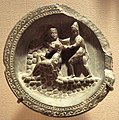
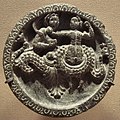
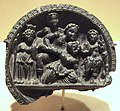





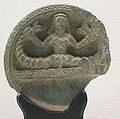



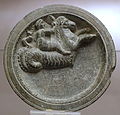

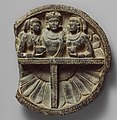

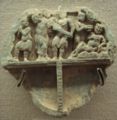

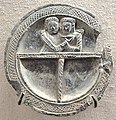
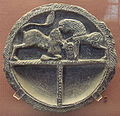
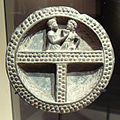
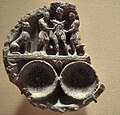
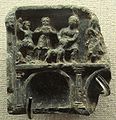

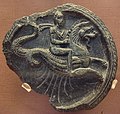
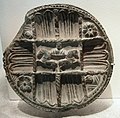
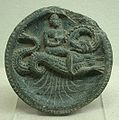


![Egyptian coupelles with deities (Isis,[6][7] Horus-Sobek[8]...), 2nd century CE](http://upload.wikimedia.org/wikipedia/commons/thumb/e/e9/Egyptian_coupelles_with_deities%2C_2nd_century_CE.jpg/327px-Egyptian_coupelles_with_deities%2C_2nd_century_CE.jpg)
![Egyptian cups with deities (Sarapis,[9] Isis,[10] Harpocrates, Horus,[11] Osiris...), 2nd century CE](http://upload.wikimedia.org/wikipedia/commons/thumb/4/40/Egyptian_cups_with_deities%2C_2nd_century_CE.jpg/261px-Egyptian_cups_with_deities%2C_2nd_century_CE.jpg)